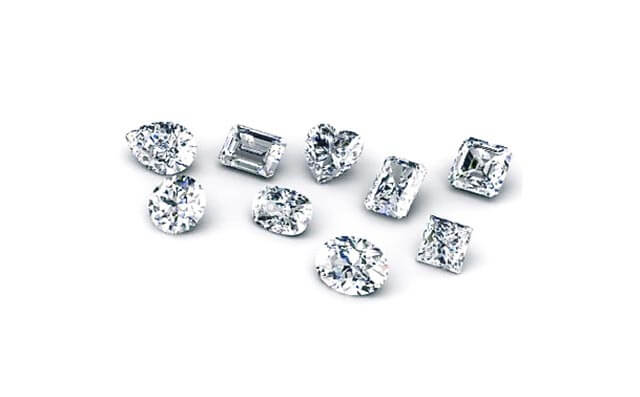When it comes to purchasing diamonds you should always keep the 4Cs in mind. The 4Cs are the four main qualities that make up a diamond: cut, color, carat, and clarity. While cut is typically deemed the most important, a combination of all 4Cs is crucial for determining the quality of a diamond. The cut of a diamond determines how much the stone will shine. The color refers to the degree of colorlessness in a diamond. Diamond size is measured in carat weight. But one of the 4Cs that doesn’t receive enough attention is clarity. What exactly does diamond clarity mean?
Diamond clarity refers to the absence of inclusions and blemishes within a diamond. We all know how a diamond is formed- a natural diamond is the result of the carbon element’s extreme exposure to heat and pressure deep within the Earth. This process takes a tremendous amount of time and can result in a variety of “flaws” within the diamond. Internal characteristic flaws are referred to as inclusions while external flaws are called blemishes. These imperfections are completely natural- think of them as a unique birthmark.
It is very rare to come across a pure diamond with no inclusions or blemishes.In fact, most jewelers have never even seen one! While diamond clarity affects the overall appearance of a diamond, some inclusions and blemishes don’t have a negative effect because they are unnoticeable to the naked eye. However, some inclusions and blemishes can be seen with the naked eye, and do affect the appearance of the diamond. It’s helpful to understand the way clarity is graded.
Evaluating diamond clarity involves identifying the number, size, relief, nature, and position of each and every inclusion and blemish. The GIA Clarity Scale is the universal scale used to determine the clarity of a diamond. The scale consists of 6 categories, some of which are divided, for a total of 11 different grades:

Courtesy of GIA ©
Consider purchasing an “eyeclean” diamond. Diamonds that are graded VS₁ or higher are considered eye clean, which means inclusions are invisible to the naked eye. Unless someone you know wanders through life wearing a jeweler’s loupe around their neck (we sure don’t), no one will even notice your diamond has slight imperfections! However, Slightly Included diamonds (SI1 and SI2) may also be eye clean, depending on the nature and placement of inclusions or blemishes. Those diamonds can be great bargains, since they are priced as SI diamonds but “face up” (look from the top) as eye clean as VS diamonds, which are priced considerably higher per carat.

That’s actually a pretty tricky question. The answer is simple, but it’s not straightforward. The most important 4C depends on you. What are your priorities when looking for the ideal diamond? This depends on your taste, your budget and what you deem most important. If you desire a perfect diamond without any blemishes or inclusions, then yes, diamond clarity is the most important. But it will cost you. Remember, the closer a diamond comes to absolute perfection, the higher its value. Since many inclusions and blemishes are microscopic, they don’t affect the diamond’s beauty in a visible way. In order to maximize your budget, look for a diamond that combines all 4Cs in an optimal way to you.
At Leo Hamel’s, our goal is to help you find the best diamond quality at the best price for you. Visit our jewelry store on San Diego Avenue to meet with one of our expert gemologists to find your perfect diamond. Our vast selection of loose diamonds and preset diamonds gives you the perfect opportunity to compare diamonds of different clarity, cut, color, and carat. Together we’ll determine exactly what you’re looking for in a diamond, and find the best one for you.